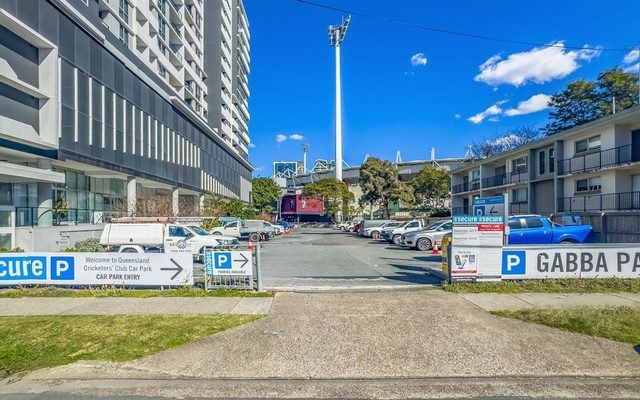This article is from the Australian Property Journal archive
THE Queensland government has knocked back a recommendation to build a new $3.4 billion stadium at Victoria Park ahead of the 2032 Olympic and Paralympic Games, with Premier Steven Miles saying he could not justify the spending when “Queenslanders are struggling with housing costs”.
The government said it would accept 27 of the 30 recommendation made by former Liberal National party lord mayor Graham Quirk’s 60-day review, but pushed back on the option to deliver a 55,000 brand-new stadium on the northern fringe of the CBD.
“When Queenslanders are struggling with housing and other costs I cannot justify to them spending $3.4 billion on a new stadium,” Miles told reporters outside Suncorp Stadium.
Quirk’s review said the Victoria Park stadium option “provides an opportunity to deliver the best outcome”.
“The cost of a stadium in Victoria Park ($3 billion to $3.4 billion) is likely to be marginally more expensive than the full Gabba rebuild (more than $3 billion) with better operational efficiencies and outcomes that would deliver a true international standard venue, enabling Brisbane to compete with other top stadiums in Australia and generate additional premium seating revenue,” the review said.
The Queensland government also announced yesterday a change of plans for the Games, with Suncorp Stadium to now host the opening and closing ceremonies in favour of the ageing Gabba. Earlier last year it was announced that the Gabba will be fully demolished and rebuilt as part of a $7 billion funding agreement struck between the state and federal governments, which was blasted by the Greens federal MP Max Chandler-Mather – the party’s spokesperson for housing and homelessness – for its lack of social and affordable housing.
The government has also agreed to a $1.6 billion upgrade to the Queensland Sport and Athletics Centre (QSAC) at Mount Gravatt – which hosted the 1982 Commonwealth Games – from 14,000 to 40,000 seats for the Games, and more than half a billion dollars for a “more modest enhancement” of the Gabba in consultation with the AFL, Cricket Australia, and other stakeholders.
While the capacity expansion at QSAC would only be temporary, “any upgrades to QSAC will further broaden community access”, the government said in a statement.
“No one wants to see money spent on facilities that are only needed for four weeks,” Miles said in the statement.
The Gabba’s rebuild was initially slated to cost $2.7 billion but that has blown out to around $3 billion, while also creating logistical difficulties for the AFL and cricket that would be estimated to cost between $185 million and $360 million.
On the maintenance of the Gabba, the report stated, “It is important to note that this investment would not improve the capacity or functionality of the stadium, nor would it materially enhance spectator or stadium user experiences”. Miles said the venue would not be fully accessible for those with disabilities after the works.
The review received more than 900 submissions, while the panel held 130 meetings and conducted 28 site visits.
Developers and investors have swarmed to the area around the Gabba and the suburb of Woolloongabba in anticipation of the boon of the Games and an upgraded stadium. Among them, Belmonde Property Group and Sun Luxe Group lodged a $1.5 billion development application for a four-tower mixed-use project with 1,400 build-to-rent apartments and a hotel, and ASX-listed Vicinity Centres received the green light for a $750 million transformation of its Buranda Village.
The landmark Logan & Trafalgar site in the precinct sold for $20.5 million in September – setting a record land rate for Woolloongabba – selling to an offshore buyer out of Asia.
The Woolloongabba urban renewal precinct has been moving forward with community consultation on the largest urban renewal in Brisbane since South Bank.




